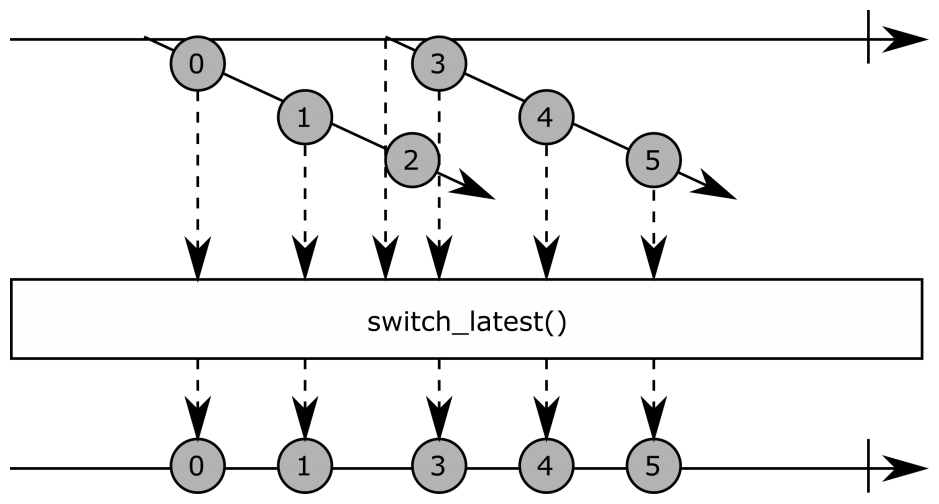The switch_latest operator take a higher-order observable as input. Each time a new item is emitted on this source observable, a subscription is done on the child observable, and the existing subscription on the previous item is disposed of. The following figure shows the marble diagram of this operator:

Its prototype is the following:
Observable.switch_latest(self)
Here is an example of the switch_latest operator:
obs1 = Subject()
obs2 = Subject()
obs3 = Subject()
higher_order = Subject()
higher_order.switch_latest().subscribe(
on_next = lambda i: print("on_next {}".format(i)),
on_error = lambda e: print("on_error: {}".format(e)),
on_completed = lambda: print("on_completed")
)
higher_order.on_next(obs1)
obs1.on_next("1: 1")
obs1.on_next("1: 2")
higher_order.on_next(obs2)
obs1.on_next("1: 3")
obs2.on_next("2: 1")
obs2.on_next("2: 2")
higher_order.on_next(obs3)
obs2.on_next("2: 3")
obs3.on_next("3: 1")
obs3.on_next("3: 2")
In this example, three observables are created as subjects, as well as a higher-order observable (also created as a subject). The higher-order observable is subscribed after the switch_latest operator. This higher-order observable emits the three other observables. Each of these observables emits three items, but with the emission of the next observable interleaved on the higher-order observable.
This example gives the following result:
on_next 1: 1
on_next 1: 2
on_next 2: 1
on_next 2: 2
on_next 3: 1
on_next 3: 2
Only the first two items of each observable are received. This is the expected result since the third item is always emitted after another observable is emitted on the higher-order observable. So, the switch_latest operator unsubscribes the corresponding observable before the third item is emitted.
